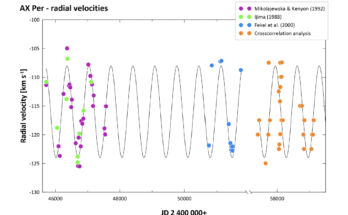Continue to article page to display article full-text.
Explanation for the general audience
This work focuses on creating maps of the geomagnetic field and areas of increased cosmic radiation around the Earth. These areas must be mapped for a safe operation of satellites and to maintain the health of the crews on the International Space Station. This work was created in cooperation with the Institute of Technical and Experimental Physics at CTU which provided data measured by the Proba-V satellite in 2015. Proba-V is an ESA satellite with an almost circular trajectory at an altitude of about 810 km. One of the outcomes of this work are maps of the geomagnetic field distribution in the flight level of the satellite. The overall distribution of the geomagnetic field is shown by maps of the magnetic induction magnitude. Magnetic induction attains the lowest values in the area above the South Atlantic and South America and the highest values in the area south of Australia which is the area of the North Magnetic Pole. Other maps show the positions of the magnetic equator and the parallels. Geomagnetic field distribution maps for the individual months of 2015 show that the field has the same shape during the year. Another result was the mapping of areas of an increased number of charged particles around the Earth. These maps clearly show the position of the so-called South Atlantic anomaly and radiation belts around the magnetic poles. A comparison of geomagnetic and radiological maps showed that the area of the South Atlantic anomaly corresponds to the area of the lowest values of magnetic induction. The radiation bands around the poles copy the shape of the magnetic parallels. More focus was directed on the period around June 22, 2015, when a larger solar flare was observed around the Earth. The results of the measurements showed that at the time of the eruption, the number of charged particles around the Earth increased considerably and also that the areas where these particles accumulate significantly increased.





